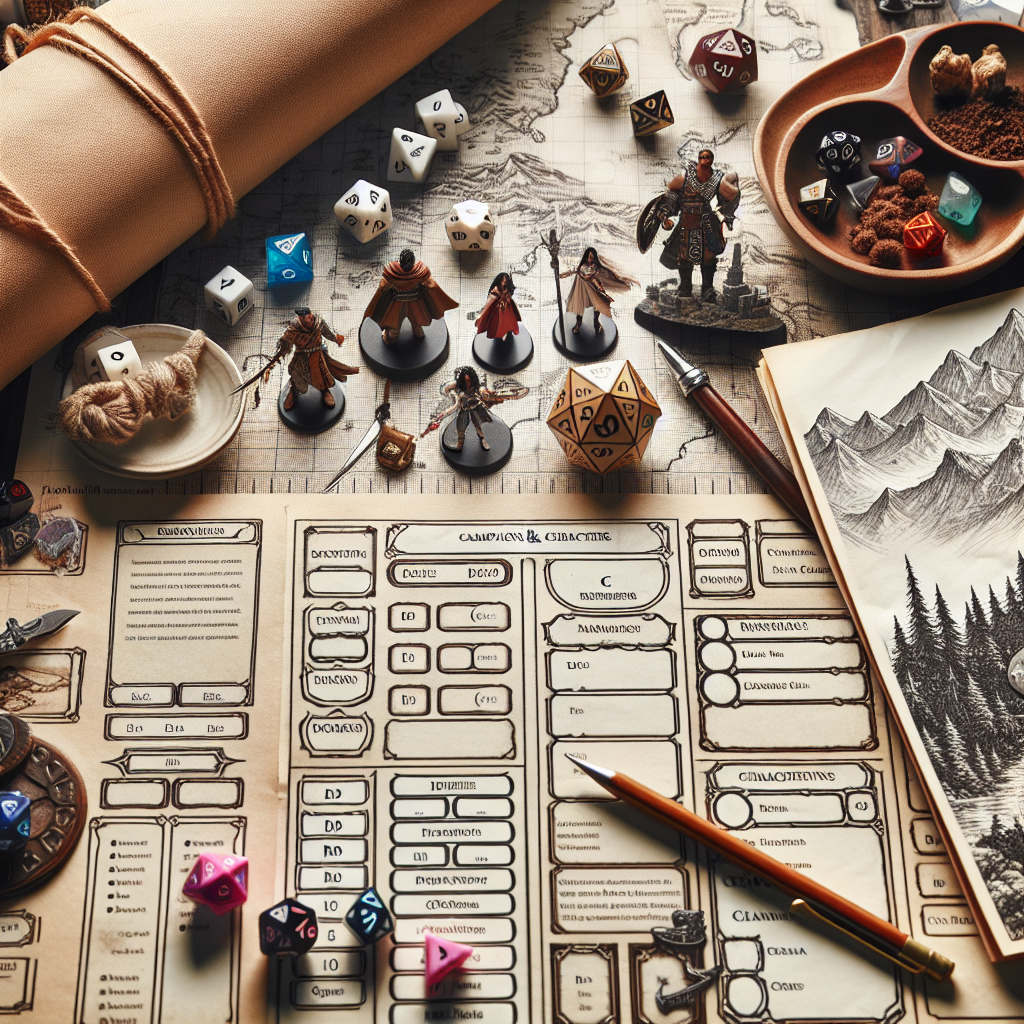Campaigns and Characters: Building Your D&D Board Game Experience
Dungeons & Dragons (D&D) has become a cultural phenomenon that extends beyond traditional tabletop sessions; it has woven itself into the fabric of board gaming as well. Although D&D has its roots in role-playing, the game’s rich narratives and character-driven stories lend themselves perfectly to the mechanics of board games. This article will explore how to enhance your D&D board game experience through effective campaign design and character development.
Understanding the Essence of D&D
At its core, D&D is about storytelling. The Dungeon Master (DM) leads players through a narrative, allowing each decision to influence the unfolding story. In board game adaptations, the narrative still thrives but is often complemented by strategic gameplay. Understanding the nuances of both formats will help you create a seamless experience that captures the essence of D&D.
Campaign Design: Creating a Compelling Narrative
1. Establish a Central Conflict
Every memorable campaign has a central conflict that drives the story forward. Whether it’s a dark evil threatening a kingdom or a personal quest for vengeance, identifying this conflict early will help players become invested in the narrative. Consider structuring your campaign around a series of smaller quests that feed into the larger narrative arc, allowing for character development and growth.
2. Create Diverse Settings
The beauty of D&D lies in its diverse worlds—from bustling cities to haunted forests and treacherous mountains. In your board game, incorporate various settings that resonate with your players. These environments can impact gameplay and help set the tone for your story. Use thematic visual elements and components that evoke the feel of each location, integrating them into the mechanics of the game.
3. Offer Meaningful Choices
One of the hallmarks of a great D&D campaign is the sense of agency given to players. In a board game context, this translates to meaningful choices that affect the outcome of the game. Design scenarios where players must make decisions that influence not only their immediate gameplay but also the overarching narrative. This interplay between choices and consequences will engage players and keep them invested.
4. Incorporate Side Quests
Side quests are a staple of D&D, allowing characters to explore personal stories and deepen their relationships with one another. In a board game, including side quests can add layers of complexity to the overall experience. These tasks can be optional but will provide players with additional rewards, character development opportunities, or pieces of lore that enrich the main storyline.
Character Development: Breathing Life into Your Heroes
1. Create Unique Characters
Characters are the heart of any D&D campaign. In a board game setting, allow players to create unique avatars with distinct abilities, traits, and backstories. Providing players with a variety of classes or abilities can help tailor their experiences. Encourage players to develop their characters’ backstories, as this will enhance their investment in the game’s narrative.
2. Foster Player Collaboration
D&D is inherently collaborative, and this dynamic should also apply to your board game. Facilitate teamwork by designing mechanics that require players to combine their skills, share resources, or strategize together. This collaboration can enhance the story, with character relationships evolving based on their interactions throughout the game. Encourage role-playing during these moments, allowing players to voice their characters and further immerse themselves in the experience.
3. Reward Character Growth
As characters progress through your campaign, they should have opportunities to grow and evolve. Implement mechanics that reward players for achieving personal goals, completing quests, or developing their characters’ stories. This could include unlocking new abilities, gaining narrative privileges, or deepening ties with other characters. Such rewards will motivate players to engage more deeply with both their individual narratives and the overarching plot.
4. Embrace Player Creativity
Give players the freedom to contribute to the story. Encourage them to take narrative risks, improvise, and add personal touches to their characters’ arcs. Incorporate a "narrative bonus" mechanic that rewards players for creative ideas or backstory elements that enhance the campaign’s richness. This investment creates an organic environment where players feel ownership over the unfolding narrative, fostering a deep emotional connection to the game.
Conclusion: Crafting a Memorable Experience
Creating a captivating D&D board game experience requires a blend of compelling campaigns and dynamic character development. By embracing the principles of storytelling, collaboration, and character growth, you can forge an unforgettable adventure that honors the spirit of Dungeons & Dragons. Ultimately, the goal is to facilitate shared experiences that entertain, inspire, and allow creativity to flourish—ensuring that players are not just participants, but active co-authors of an epic narrative. Whether brandishing a sword or casting a spell, the worlds you create will linger in the hearts of players long after the final die is cast.




